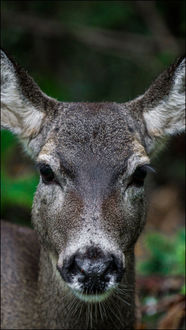Enjoying local wildlife is important to our way of life in the Pacific Northwest. Our parks and open spaces make for great habitat, but please be aware that the state Department of Fish and Wildlife has wildlife management authority, not the City of Bellevue. We don’t offer trapping, translocation or lethal removal services for animals involved in conflicts, such as black bears and coyotes.
The resources below link to many of the frequently asked questions we hear from residents. Follow-up questions should be directed to the appropriate agency.
- "Enjoy Bear Country Safely" – Parks & Community Services educational document in multiple languages. Please direct questions about black bears to the WDFW.
- "BearWise" – BearWise is the black bear program you can trust for sound information and smart solutions that help homeowners, businesses and communities coexist with bears. Please direct questions about black bears to the WDFW.
- "Sharing the Neighborhood with Coyotes" – Bellevue Parks & Community Services educational document in multiple languages. Please direct questions about cougars to the WDFW.
- "Sharing the Woods with Cougars" – Bellevue Parks & Community Services educational document in multiple languages. Please direct questions about cougars to the WDFW.
- Washington Department of Fish and Wildlife – Contact information for the North Puget Sound (Mill Creek) regional office along with information on black bears, hunting and fishing regulations, reporting poaching violations, WDFW enforcement, reporting sick/dead/injured wildlife, wildlife diseases, nuisance wildlife (such as beavers and raccoons), injured or orphaned wildlife, finding a local wildlife rehabilitator, how to hire a wildlife control operator, the state Fish and Wildlife Commission and aquatic invasive species.
- U.S. Fish and Wildlife Service – Bald Eagles (including nests and roosts), birds and their nests as protected by the Migratory Bird Treaty Act, threatened and endangered species, the National Wildlife Refuge System, harassment of birds by drones, Migratory Bird Hunting and Conservation Stamp (a.k.a., Duck Stamp), feather repositories and federal permits.
- Report dead wildlife on Bellevue’s roadways using the MyBellevue customer assistance portal or by contacting trreception@bellevuewa.gov.
- Bellevue Utilities Department – Salmon Watchers Program, keeping waterways clean, Kelsey Creek camera, New Zealand mudsnails, peamouth minnows, pet waste, stream habitat assessment, Stream Team and reporting spills near storm drains or water bodies.
- Free Educational Programs (Bellevue Parks & Community Services) – City of Bellevue Park Rangers offer year-round educational programming on wildlife. These programs are free and are tailored to local species.
Wildlife Videos
Coyote
A coyote seen here at Coal Creek Natural Area. Coyotes are common throughout Bellevue – just seeing one nearby certainly isn’t cause for alarm.
Deer
Bellevue is rich in wildlife. Seen here, a Columbian black-tailed deer walks a game trail at Tax Lot Open Space.
Bobcat
Bobcats roam Bellevue’s parks and open spaces. Note the black spots and banding on the legs and the short, bobbed tail – both of which help us identify this as a bobcat and not a cougar.
Bear
Much of Bellevue is bear country. Bears love easy to get food including trash, birdseed, hummingbird feeders, pet food, compost, orchard fruit, and grills. To help prevent conflicts, please turn your yard into food-free zone. While recreating in the parks, remember to view bears from at least 100 yards away… no sneaking up for “selfies”!

